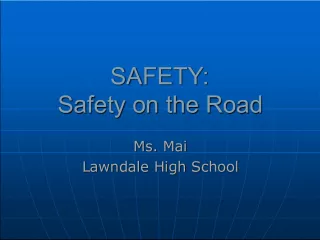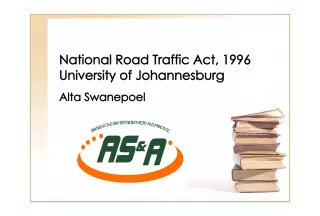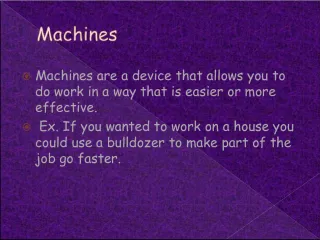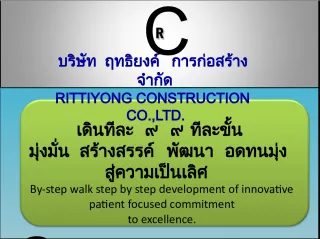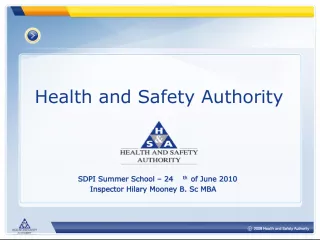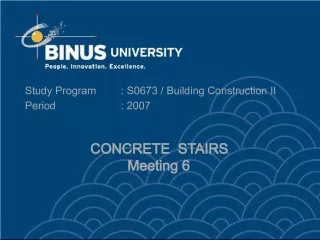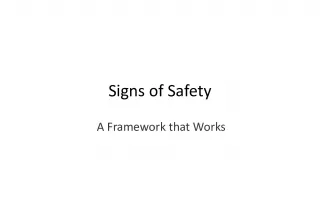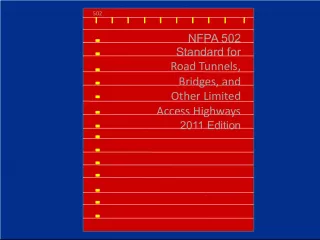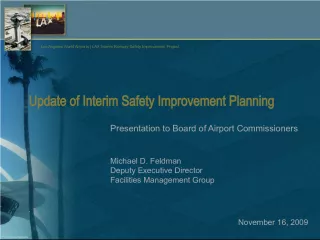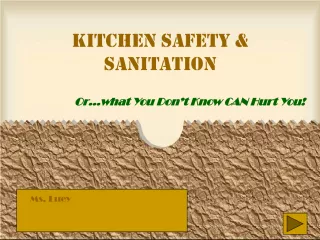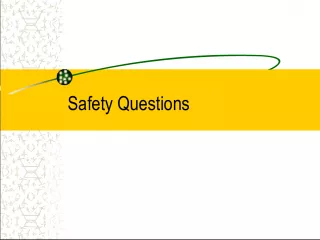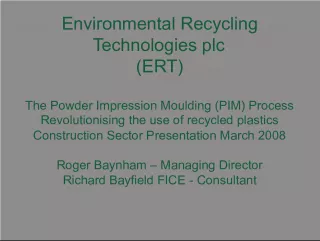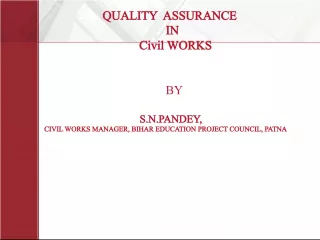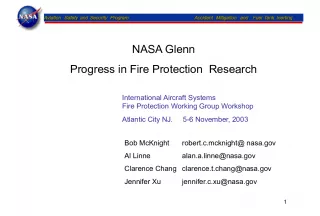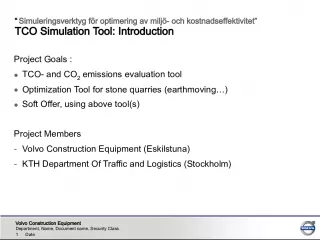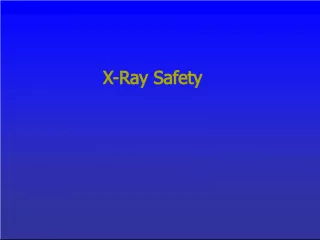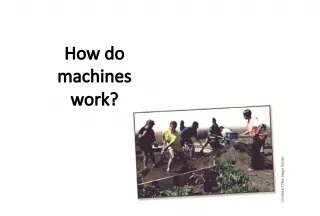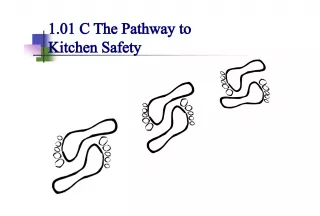Road Construction and Work Safety: A Concern for All
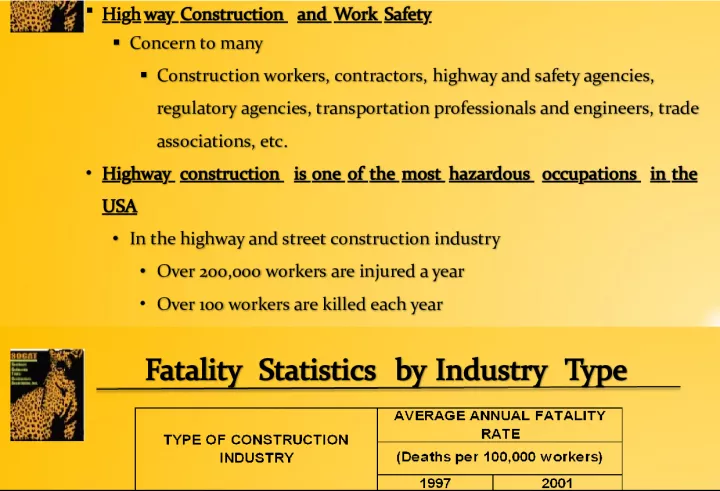

This article sheds light on the hazards faced by construction workers, contractors and regulatory agencies involved in highway and street construction. Find out about the latest regulations, safety practices and how to mitigate risks.
- Uploaded on | 0 Views
-
 dustinboehm
dustinboehm
About Road Construction and Work Safety: A Concern for All
PowerPoint presentation about 'Road Construction and Work Safety: A Concern for All'. This presentation describes the topic on This article sheds light on the hazards faced by construction workers, contractors and regulatory agencies involved in highway and street construction. Find out about the latest regulations, safety practices and how to mitigate risks.. The key topics included in this slideshow are Work safety, Construction workers, Highways, Street construction, Regulations,. Download this presentation absolutely free.
Presentation Transcript
2. Introduction Introduction way Construction and Work Safety High way Construction and Work Safety Concern to many Concern to many Construction workers, contractors, highway and safety agencies, regulatory agencies, transportation professionals and engineers, trade associations, etc. Construction workers, contractors, highway and safety agencies, regulatory agencies, transportation professionals and engineers, trade associations, etc. Highway construction is one of the most hazardous occupations in the USA Highway construction is one of the most hazardous occupations in the USA In the highway and street construction industry In the highway and street construction industry Over 200,000 workers are injured a year Over 200,000 workers are injured a year Over 100 workers are killed each year Over 100 workers are killed each year
3. Fatality Statistics by Industry Type Fatality Statistics by Industry Type Risk of death of Highway and Street Construction workers is 2 to 4 times that of the remainder of the construction industry. Census of Fatal Occupational Injuries (CPO1) Bureau of Labor Statistics
4. Fatality Statistics by Industry Type Fatality Statistics by Industry Type Highway work spaces are unique Worker exposure to potential hazards include: Construction related hazards Vehicle intrusion in the work place Workers directing passing traffic and construction traffic Interaction between workers, machinery, equipment, trucks and vehicles within the work space Restricted work space Night operations Pressure to complete project early exacerbates the situation
5. Causes of Highway Worker Fatalities Causes of Highway Worker Fatalities 120 to 130 workers die each year in highway and road construction (H&SC) activities Majority of the fatalities (74%) for H&SC workers are due to: One-foot workers struck by passing vehicular traffic (23%) One-foot workers struck by construction vehicles (18%) Construction vehicle operator and occupant events (e.g., rollovers) (18%) Highway traffic accidents (15%) *Sources: BLS CFOI data, 1992-1996; and SIC 1661 contractors OSHA 200 data as posted on the National Work Zone Safety Information. Clearinghouse website at http://wzsafety.tamu.edu/files/factsheet
6. Causes of Highway Worker Injuries Causes of Highway Worker Injuries Majority of serious injuries are due to: Over-exertions (27%) Falls (23%) Being struck by other objects (17%) Tools, materials, equipment parts, trees. Etc. *Source: BLS CFOI data, 1992-1996; and SIC Contractor OSHA 200 data (data log and summary) as posted on the National Work Zone Safety Information Clearinghouse website at http://wzsafety.tamu.edu/files/factsheet *Source: BLS CFOI data, 1992-1996; and SIC Contractor OSHA 200 data (data log and summary) as posted on the National Work Zone Safety Information Clearinghouse website at http://wzsafety.tamu.edu/files/factsheet
7. Causes of Highway Worker Fatalities Causes of Highway Worker Fatalities The number of injuries and fatalities from traffic crashes far outweigh the number of H&SC workers that are injured or killed ; Traffic crash data In the USA, in 2001: 2.9 million people were injured in traffic crashes 42,116 people were killed in traffic accidents Highway Work Accident Data In the USA each year, over 20,000 H&SC workers are seriously injured In 2001, 132 H&SC workers were killed in the USA
8. Highway Safety vs. Construction Safety Highway Safety vs. Construction Safety For year 2001 Highway traffic crashes-motorists 1,586 injuries per 100,000 licensed drivers 22 persons killed per 100,000 licensed drivers Highway and street construction workers 6,765 injuries per 100,000 workers 44.6 persons killed per 100,000 workers
9. National Work Zone Traffic Crash Trends National Work Zone Traffic Crash Trends *Source: Fatal Accident Reporting System
10. National Work Zone Traffic Crash Trends National Work Zone Traffic Crash Trends Between 1992 and 1998 A total of 152 H&SC workers were killed from being struck by a vehicle from passing traffic On average 25 workers are killed per year from intruding vehicles National Work Zone Traffic Crash Trends National Work Zone Traffic Crash Trends
11. Distribution of Work Zone Fatalities by Occupation on Average Distribution of Work Zone Fatalities by Occupation on Average Other trades 33% Truck drivers 9% Construction laborers 42% Operating engineers 9% Supervisors 7% Source: NIOSH/CDC. Deaths Caused by Vehicles and Heavy Equipment on Construction Sites, Sept. 2002
12. Events Leading to H&SC Worker Fatalities Events Leading to H&SC Worker Fatalities Collision between Vehicles 10% Noncollision Highway Incidents 9% Nonhighway Transportation Incident 8% Highway Transportation Incident 23% Caught in Equipment or Object 5% Struck by Object 7% Struck by Falling Object 4% Contact with Objects and Equipment 14% Fall to Lower Level 3% Harmful Substances or Environment 5% Contact with Current (Electrocution) 4% All Others 8% (Source: Bureau of Labor Statistics)
13. Hazard to On-Foot Workers; Type of Barrier Hazard to On-Foot Workers; Type of Barrier No Rigid barriers to separate workers from passing traffic No Rigid barriers to separate workers from passing traffic
14. Hazard to On-Foot Workers: Too Close to Traffic Lane Hazard to On-Foot Workers: Too Close to Traffic Lane Truck may be traveling at a high speed Truck may be traveling at a high speed
15. Overhead Power Lines Overhead Power Lines Truck/equipment in potential contact with overhead power lines, which may result in electrocution
16. Improper Personal Protective Equipment Improper Personal Protective Equipment No steel toed shoes No steel toed shoes No shirts (and other PPE No shirts (and other PPE ) U sing cell phone in middle of the lane (distraction)
17. Importance of Training Importance of Training Improve knowledge, skills, ability and attitude in order to perform construction related activities safely and efficiently Increase awareness of job hazards and methods to abate them Improve safety for workers and reduce injuries/fatalities
18. Other Training Material Available Other Training Material Available Occupational Safety and Health Administrators (OSHA) 10 hour training course on Roadway Construction Industy Htpp://www.artba.org/pdf/2003 Michigan Road Builders Association, (MRBA) Heavy/Highway Construction Safety Best Practices Southern California Contractors Association, INVC
19. Importance of Training Importance of Training Improve knowledge, skills, ability and attitude in order to perform construction related activities safely and efficiently Increase awareness of job hazards and methods to abate them Improve safety for workers and reduce injuries/fatalities
20. Other Training Material Available Other Training Material Available Occupational Safety and Health Administrations (OSHA) 10-hour training course on roadway construction industry http://artba.org/pdf/2003 10 hour overview.pdf Southern California Contractors Association, Inc. Safety Manual for Workers on Roadways open to Motorists http://www.sccaweb.org/safetytraining.htm
21. More Training Materials Available More Training Materials Available National Institute for Occupational Safety and Health/Center for Disease Control and Prevention (NIOSH/CDC) Building Safer Highway Work Zones; Measures to Prevent Worker Injuries from Vehicles and Equipment http://www/cdc.gov/niosh/201128.html
22. Mark Hebson, Administrative Agent Mark Hebson, Administrative Agent 22925 Arlington, Suite #1 22925 Arlington, Suite #1 Torrance, CA 90501 Torrance, CA 90501 Phone: (310) 530-9662 Phone: (310) 530-9662 Fax: (310) 530-0081 Fax: (310) 530-0081 Website: www.socattrade.org Website: www.socattrade.org
